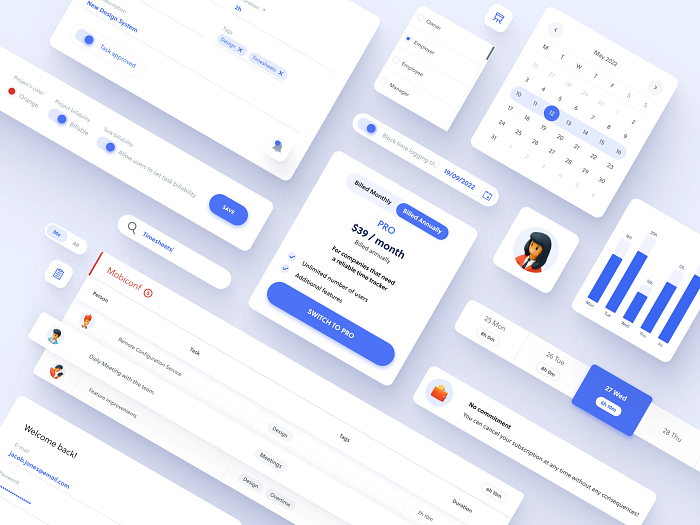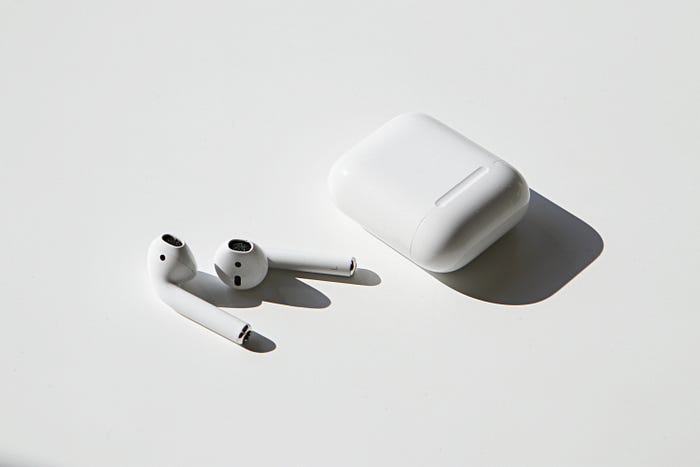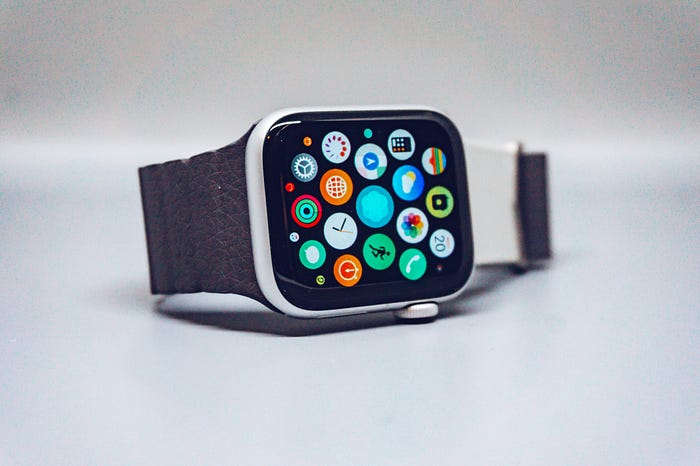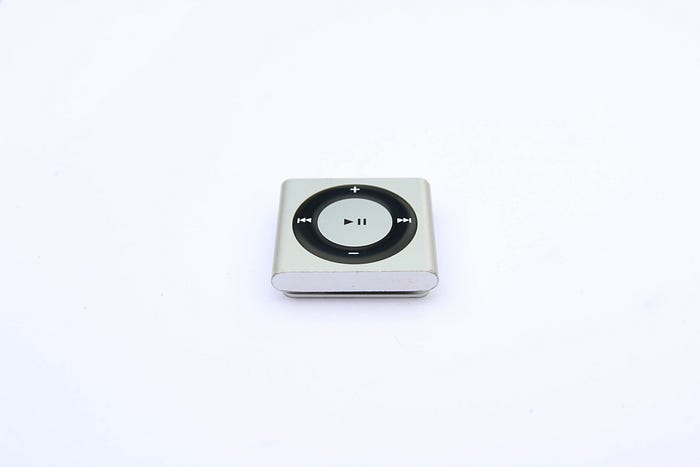

10 Principles of Good Product Design: How to Build a Successful Digital Product
source link: https://uxplanet.org/10-principles-of-good-product-design-how-to-build-a-successful-digital-product-cc917c542fd4
Go to the source link to view the article. You can view the picture content, updated content and better typesetting reading experience. If the link is broken, please click the button below to view the snapshot at that time.
10 Principles of Good Product Design: How to Build a Successful Digital Product

Designed by
In today’s fast-paced business environment, product design is becoming a critical factor in the success of any organization. With competition increasing in every industry, from social media and entertainment to fintech and banking, companies must create products that stand out in the market and provide exceptional value to customers. As a Product Designer at Miquido, a leading digital product development company, I’ve seen firsthand the importance of adhering to key principles in product design that drive success and distinguish our products in the marketplace.
Product design involves a range of activities, including ideation, research, prototyping, and testing, all aimed at delivering products that are functional, usable, and visually appealing. But excellent product design can be a game-changer, helping businesses differentiate themselves, build brand loyalty, and increase revenue while taking care of sustainability, accessibility, ergonomics, and innovation.
So what’s the difference between a mediocre product design and an excellent one, you might ask. Product design is a multidisciplinary approach to product development, so the answer to this question must be complex and multifaceted. Therefore, I have determined 10 principles of product design that are critical for creating successful, outstanding products.
What’s on the menu for today?
- You will learn 10 principles of excellent product design based on my experience from working with global brands at the software development agency (if you need evidence — here’s our portfolio),
- You will discover examples of good product design to help you understand the benefits of incorporating these principles into your products,
- You will learn how to create products that meet user needs, deliver exceptional experiences, and drive business growth (all at once — because that’s the whole point of product design!).
Whether you’re a business person or a product designer, learning and comprehending product design principles will help you develop successful and impactful products.
So, without further ado, let’s begin!
Principle 1: Functionality
The first and foremost principle of product design is functionality. Functionality refers to the product’s ability to perform the functions that it is intended for. A product that does not function effectively and efficiently will not meet the needs of its users and ultimately fail in the market. The core features of a product should work seamlessly and intuitively, requiring minimal effort from the user. Functionality also includes factors such as speed, reliability, and durability. A product that functions well and meets the needs of its users is the foundation on which all other aspects of the design are built.
To ensure a product meets user needs, designers must prioritize functionality above all else when designing a product. The product’s core features should work intuitively, and the overall performance should be reliable and efficient. For example, the Kindle has a long battery life and a vast selection of e-books, making it a highly functional and reliable product for avid readers. By prioritizing functionality, products that meet user needs and are successful in the market can be created.

Principle 2: Usability
The second principle of product design is usability. While functionality ensures that a product works well, usability ensures that the product minimizes user effort. This involves a user-centered design approach, where designers conduct research to understand user behavior, preferences, and pain points, and create a user interface and experience that is intuitive, easy to navigate, and aesthetically pleasing. A product that is difficult to use or requires extensive training to operate will not be successful in the market, so prioritizing usability is essential for a product’s success.
Google Maps is an excellent example of good product design based on usability. Its simple navigation, clear directions, and clean user interface make it an easy-to-use and intuitive app. This prioritization of usability has made it a popular choice for users seeking reliable navigation assistance, showcasing how good usability design can lead to a successful product.

Principle 3: Aesthetics
The third principle of product design is aesthetics, which refers to a product’s visual appeal. Aesthetics can influence a customer’s perception of a product’s quality, value, and desirability through factors such as color, shape, texture, and overall design. Aesthetically pleasing products can attract attention, create positive impressions, and ultimately drive sales. Additionally, aesthetics can create an emotional connection between the user and the product, encouraging repeat use and loyalty.

The Apple AirPods are a great example of product design that prioritizes aesthetics. They feature a clean, minimalist design with no wires or bulky components and a sleek charging case that complements the overall look. The AirPods’ aesthetic design has become a hallmark of the product, helping to create a sense of desirability and brand recognition.
Principle 4: Sustainability
One of the principles of designing a product is sustainability, which means considering the effect the product has on the environment. Sustainable product design seeks to minimize negative environmental impact throughout a product’s lifecycle, from raw material extraction to disposal. This requires a holistic approach that considers factors such as material selection, manufacturing processes, energy use, transportation, and end-of-life disposal.

The Adidas Parley shoes are a great example of sustainable product design. They’re made from recycled ocean plastic, have a lightweight, breathable upper from recycled polyester and an eco-friendly midsole from renewable algae. This design incorporates sustainable elements in a functional and aesthetically pleasing way.
Principle 5: Innovation
Innovation is a critical product design principle that involves creating something new or significantly improving an existing product. Innovation can take many forms, such as introducing new features or technologies, improving the user experience, or finding new ways to meet user needs. In a highly competitive market, innovation can help a product stand out and provide unique value to customers.

Tesla’s Model S is a prime example of innovative product design. With a fully electric powertrain, a large touchscreen display, and over-the-air software updates, the Model S introduced new technologies that enhanced the driving experience while addressing environmental concerns. Tesla’s focus on innovation disrupted the traditional automotive industry, leading to the creation of a highly successful and sustainable product.
Principle 6: Accessibility
Product design’s sixth principle is accessibility, which means the product should be usable by a diverse range of people, including those with disabilities or other limitations. This principle recognizes that all users should have equal access to the benefits and features of a product, regardless of their abilities. Designing products with accessibility in mind not only helps to create a more inclusive society but also expands the potential market for the product.
There are many ways to make a product more accessible, including designing for different types of users, such as those with visual, auditory, or motor impairments. For instance, incorporating features like audio descriptions, subtitles, large buttons, or voice commands can make a product more accessible to people with these disabilities. By prioritizing accessibility, designers can create products that are functional, inclusive, and accommodating.

The Apple Watch is an excellent example of good product design based on the accessibility. It includes various features such as VoiceOver and haptic feedback, which enable visually impaired users to use the device. Additionally, the watch’s large buttons and customizable font size make navigating the device easier for users with motor or visual impairments. These accessibility features not only make the Apple Watch functional but also inclusive and welcoming to all users.
Principle 7: Ergonomics
Ergonomics is the principle of designing products that are comfortable and easy to use for the user. It involves considering factors such as the product’s shape, size, and weight, as well as its placement of buttons and controls. The goal of ergonomics is to reduce the strain on the user’s body, making the product easier and more comfortable to use over extended periods.
Sitting for long periods can lead to discomfort and even health issues such as back pain, so office chairs should be designed with ergonomic principles in mind. This includes adjustable height, lumbar support, and adjustable armrests to provide users with the flexibility to find a comfortable and supportive position. Incorporating ergonomic principles into product design can improve user satisfaction, productivity, and even long-term health outcomes.

Principle 8: Durability
Durability is an important principle of product design that ensures a product can withstand the wear and tear of everyday use and last longer. Durable products can save customers money in the long run while also reducing waste and promoting sustainability. To achieve durability, designers must consider factors such as material quality, construction methods, and maintenance requirements.

A great example of a durable product is the Casio G-Shock watch. It’s built with durable materials and a protective design that allows it to withstand extreme conditions, making it reliable for athletes, military personnel, and outdoor enthusiasts. Its longevity also makes it sustainable, reducing waste by avoiding frequent replacements.
Principle 9: Simplicity
Simplicity is a principle of product design that focuses on creating easy-to-understand and usable products. A simple product design can help users navigate a product’s features without confusion or frustration, resulting in a better user experience. Simplicity can be achieved through various design elements, such as clear and concise labelling, minimalistic user interfaces, and intuitive product design.

The iPod Shuffle by Apple is a good example of simplicity in product design. The device was easy to use and navigate with a minimalistic interface and only a few buttons, even for non-tech-savvy users. The lack of excess features made it a popular choice for those who valued straightforward functionality.
Principle 10: Branding
The principle of branding in product design involves creating a consistent and recognizable brand identity that reflects the values and personality of the company. Branding can encompass many aspects of a product, such as its name, logo, color scheme, packaging, and overall aesthetic. A strong brand identity can help products stand out in a crowded market and can foster customer loyalty and trust.

Coca-Cola is a prime example of good product design through branding. The brand has a consistent and recognizable identity that has endured over the years, featuring its iconic red and white logo and bottle design. Coca-Cola has also created memorable advertising campaigns that have helped to strengthen its brand image and establish emotional connections with customers. The company’s strong branding has played a key role in its success as a global brand, with a presence in more than 200 countries.
Conclusion
Product design plays a significant role in the success of a business as it can impact a customer’s perception and overall experience with a product. A well-designed product can attract and retain customers, while a poorly designed product can lead to dissatisfaction, negative reviews, and decreased sales. Therefore, it’s essential to consider various design principles when developing a product, including functionality, usability, aesthetics, sustainability, innovation, accessibility, ergonomics, durability, simplicity and branding.
By taking the time to consider the principles of product design and incorporating them into your product development process, you can create outstanding products that not only meet customer needs, but also exceed their expectations. Whether you are designing a new product or improving an existing one, it is never too late to start prioritizing good design.
Recommend
About Joyk
Aggregate valuable and interesting links.
Joyk means Joy of geeK